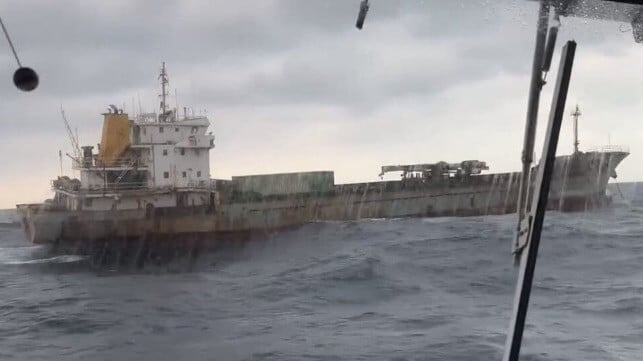Chinese Freighter Suspected of Severing Telecom Cable off Taiwan
Concerns Rise Over Subsea Cable Damage in Taiwan

Recent events off the coast of Taiwan have raised alarms about potential threats to the island’s critical telecommunications infrastructure. Last week, Taiwan’s Coast Guard Administration (CGA) reported that a Chinese freighter may have severed a telecom cable near Keelung. This incident has sparked discussions among analysts about the possibility of a gray-zone attack. This tactic has become a pressing concern for nations in the Baltic region over the past year. As Taiwan navigates its complex relationship with China, the implications of this incident could be far-reaching.
Incident Details and Immediate Response
On Friday, around 12:40 PM, Chungwha Telecom alerted the CGA about a severed subsea communications cable located just off the northern coast of Taiwan, near Keelung. The CGA quickly dispatched a patrol boat to intercept the Hong Kong-owned freighter Shunxin-39, which was reported to be near Yehliu at the time. The CGA ordered the freighter to reverse its course and return to Keelung for further investigation.
However, the situation has since become murky. The current location of the Shunxin-39 remains unclear, as its Automatic Identification System (AIS) signal has not been detected by commercial services since Friday. In response to the incident, the CGA has forwarded all gathered information to a prosecutor for a criminal inquiry. This investigation aims to determine whether the severing of the cable was accidental or part of a deliberate act.
Subsea cables are often damaged accidentally, typically due to activities like anchor-dragging or trawling in areas where cables cross. Such actions can put immense strain on the cables, leading to severance. In recent years, several incidents in the Baltic Sea have raised concerns about similar tactics being used to disrupt communications and energy supplies. The CGA’s investigation into the Shunxin-39 incident will likely focus on whether this was an isolated event or part of a broader pattern of aggression.
Historical Context and Broader Implications
Marco Ho Cheng-hui, CEO of the Taiwanese self-defense advocacy group Kuma Academy, has pointed out that China has a history of using maritime vessels to damage Taiwan’s subsea infrastructure. He suggested that the recent incident involving the Shunxin-39 could be a test to gauge how much covert sabotage China can conduct without facing significant international backlash. This perspective highlights the strategic importance of subsea cables, which are vital for global communications and economic stability.
In the Baltic region, similar incidents have raised alarms among NATO countries. Over the past 15 months, three merchant ships have allegedly dragged anchor across the seabed, severing multiple cables and a gas pipeline. These ships had connections to Russia, and at least one incident is suspected to involve Russian intelligence. In response, NATO has increased its patrols in the area to safeguard against potential threats.
The Shunxin-39 is a 3,000 deadweight ton coastal freighter, owned in Hong Kong and flagged in Tanzania. It was previously registered under a Chinese flag until early 2024. The vessel’s ownership and registration history, combined with the recent incident, have raised suspicions about its intentions. As Taiwan continues to monitor the situation, the implications of this incident could extend beyond its shores, affecting regional security dynamics and international relations.
